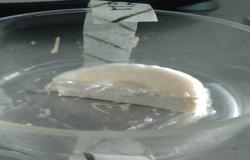Ressources dossier
Food, Global HealthFermented foods, a potential for innovation in the food transition
Published on 14 February 2023
Fermentation has been used for thousands of years. Why, then, is it now seen as a powerful source of food innovation? “Even though fermentation is an age-old practice, its potential is totally under-exploited, in terms of the microorganisms used, the fermentation processes, and ultimately the fermented foods and drinks that result”, explains Damien Paineau, Executive Director of the Grand Challenge research and innovation programme Ferments of the Future (see inset). There are billions of microorganisms, but very few are used for food fermentation. “For the production of yoghurt, only two strains of bacteria are used”, says Marie-Christine Champomier-Vergès. A major challenge for research is to further explore the natural biodiversity of the available microorganisms and to identify whether some of them might have interests that are still unknown today. Another avenue of research is to understand the effects of fermentation carried out with several microorganisms, called consortia, and to identify the nutritional or sensory functionalities that this confers on the food or fermented drinks.
Ferments for the food of the future

To meet the challenges of innovation in the field of ferments and fermented foods, research teams and economic players are getting into gear through the Ferments of the Future Grand Challenge. Initiated by the government and supported by INRAE and ANIA (National Association of Food Industries), this programme benefits from substantial public funding within the framework of France 2030. Launched in September 2022, it will be based on projects selected through annual calls for projects. An innovation platform unique in Europe, located on the Saclay plateau south of Paris, will be set up in 2023.
Exploring the biodiversity of bacteria and yeast
INRAE stores 4,000 strains of food-related bacteria at -80 degrees or freeze-dried.
This is the ambition of the CIRMs, International Microbial Resource Centres, which is where collections of microorganisms are permanently stored, showcased and developed. There are five in France, managed by INRAE, including one entirely dedicated to bacteria of food interest, the CIRM-BIA, based in Rennes within the STLO unit and another dedicated to yeasts in Montpellier within the SPO unit. “This is a real treasure trove. Many of these bacteria would be great for food fermentation”, explains Florence Valence, head of the CIRM-BIA. “For the collection, we look for the bacteria where they are!” For example, as part of a project on the characterisation of the microbial diversity associated with grape musts from different grape varieties, scientists have collected more than 600 strains of bacteria to study their interest in terms of biodiversity and functionality. To preserve them, the 4,000 strains in the CIRM BIA collection are either cryogenically stored at -80 degrees or freeze-dried.
The aim is also to characterise the microbiological resources from a genotypic and phenotypic point of view and to find functionalities of interest in connection with fermented foods. “We are interested in functionalities such as the production of aroma compounds, probiotic activity, texture-building activity, as well as the capacity of bacteria to develop under certain conditions of acidity or pH to meet the needs of particular food processes”, explains Florence Valence.
It's about preserving heritage. Health regulations have reduced the risks linked to pathogenic bacteria but we've also reduced the useful ones.
Lastly, development is carried out through specific research projects at INRAE, but also via the distribution of strains to the scientific, academic and industrial communities that wish to use them. “We often work with industrial players, because the agrifood industry is interested in many of our strains.” As part of the Profil project, in collaboration with partners in industry, the researchers screened 700 strains to find bacteria with anti-fungal properties. Six years later, the scientists have transferred seven bacteria identified as anti-fungal to industrial players so that they can use them instead of sorbate or natamycin, the usual additives in dairy products, for example, and thus prevent mould naturally. But all this work is only of interest if the data associated with this collection is properly protected. In the words of Florence Valence: “It is one thing to keep these samples, but what is key today is the conservation and management of the associated data. A resource without associated data is ultimately worthless”, she says.
Artificial intelligence to the rescue
Until now, in microbiology, researchers have worked with empirical approaches: they test microorganisms, have them interact with food and analyse the results. With digital technology, scientists are moving towards more predictive approaches: “In Ferments of the Future, we will use data science and artificial intelligence to predict the action of microorganisms and thus optimise the experimental phase”, explains Damien Paineau. The innovation platform in Saclay will enable larger-scale and faster experiments. Another challenge is to diversify the processes to be able to ferment new matrices, in particular plant matrices such as cereals, legumes and fruit. “Most industrial fermentation processes concern liquid matrices, such as milk or grape juice, or semi-solid matrices such as bread dough, but we need to pursue technological developments to be able to ferment more complex matrices, such as gels or solids”, stresses Damien Paineau. Indeed, these matrices present a heterogeneity between the core and the periphery of the raw material, requiring technological itineraries to be adapted.
Lastly, research is needed to better understand the potential links between fermented foods and health, in particular the interactions between the microorganisms in the food and those in the microbiota of the person ingesting the food.
Fermentation start-ups
> Fermenting plants to obtain a product that resembles cheese is the idea of the start-up Les Nouveaux Affineurs. Then the idea became a project, incubated at AgroParisTech’s Food’Inn Lab in early 2017 to become a young company that has been marketing its products since 2018. “We benefited from INRAE’s expertise in the field of food microbiology and set up a partnership with the joint research unit on Cheese (UMRF in Aurillac), with the support of the Carnot Institute Qualiment, to improve our products and carry out experiments”, explains Nour Akbaraly, founder of Les Nouveaux Affineurs. Today the start-up offers a range of alternative products to cheese, based on soya or cashew nuts, without additives or cholesterol and with a carbon footprint divided by five compared to traditional cheese.

Born of a meeting between know-how in French cheese-making and science and innovation, the start-up Les Nouveaux Affineurs aims to replace dairy-based cheeses with matured plant-based cheeses. Nour Akbaraly tells the story of this start-up, born in 2017.
> Fermentation, an anti-waste process? Thanks to fermentation, the start-up Green Spot transforms plant co-products (apple peelings, brewery grains, etc.) into flours with a high protein and fibre content, rich in vitamins, minerals and natural anti-oxidants, gluten-free and low in calories. To develop their idea, the start-up spent a year in the Toulouse laboratories of TWB (Toulouse White Biotechnology) at INRAE, benefiting from state-of-the-art fermentation equipment. Green Spot continues its collaboration with TWB and is a member of their consortium.
COST Action PIMENTO: A European network for fermented foods
PIMENTO (Promoting Innovation of Fermented Foods) is a European network for promoting innovation in fermented foods. Funded as part of a COST Action (European Cooperation in Science and Technology), the network brings together scientific communities working on this topic with non-scientists: industrial players, journalists, citizens, etc., thus developing a multi-player vision with a transdisciplinary approach. “Involving ordinary people in this type of project makes it possible to share knowledge but also good practices in terms of health safety with people who ferment at home”, explains Christophe Chassard, Director of the joint research unit on Cheese and leader of the COST Action PIMENTO.

A European COST (European Cooperation in Science and Technology) action called PIMENTO (for "Promoting Innovation of ferMENted fOods") will start in November 2021. Its main objective is to federate and structure the scientific and socio-economic communities working on fermented foods, by developing a multi-actor vision with a transdisciplinary approach.
When it was set up in 2021, the network had about 60 members and today PIMENTO has more than 300 people: “It is a real collaborative effort, bringing together scientists from different countries and disciplines, sharing our work on fermented foods and expanding the communities.” Among the flagship actions, 16 projects are being developed within PIMENTO to scientifically evaluate the health impacts of fermented foods in terms of both benefits and risks. Two other major deliverables are expected: the first is a European mapping of fermented foods, the second is to create a European public/private cluster around fermented foods to strengthen research and accelerate innovation in this sector and thus position Europe as a major player in a highly strategic subject on a global scale perceived as being a real lever for food autonomy and sovereignty.
Taste: Fermenting legumes
Legumes, peas, lentils and soybeans are stars in the field and on the plate. Since they are able to fix nitrogen in the soil, there is no need to use nitrogen fertiliser to make them grow. As sources of protein, they are a good alternative to animal proteins, which western countries must cut back on. However, they do not always taste good, and consumers do not appreciate their bitterness and earthy notes. One way to improve the sensory qualities of legumes is, unsurprisingly, fermentation.
Pea yoghurt?
“At the Paris-Saclay Food and Bioproduct Engineering Research Unit (SayFood), we decided that everything we know about milk fermentation could be applied to peas, the most widely cultivated legume in France”, explains Isabelle Souchon. This was an important lightbulb moment. The scientists then showed that it was possible to use lactic acid bacteria to ferment a mixture of milk and pea proteins. Of the 55 strains tested in 160 different combinations, 11 combinations consisting of 5 to 9 strains were selected. The ecosystems chosen have the particularity of masking the characteristic “green” taste of the pea and providing different textures ranging from a creamy dessert to a firmer paste. But what do consumers say? Are they willing to buy these new products? The Diet+ project mobilised a team of economists to study willingness-to-pay based on the information made available to consumers. The result is clear: even if there is a slight willingness-to-pay effect when consumers know that the product is good for their health or has a lower impact on the environment, taste gets the last word.

DIn the context of a Qualiment® revitalisation project, a process for the fermentation of pea proteins has demonstrated its relevance to enhancing the sensory qualities linked to the use of plant proteins. Thanks to carefully selected microbial cocktails, it has been possible to formulate plant-based foods such as “yoghurts” and “cheese”.
Fermented strawberries, anyone? What if fermentation made it possible to process food less? Flavourings, stabilisers, preservatives… industry sometimes uses chemical additives, and some of them are known to have harmful impacts on health. Fermentation can replace these enhancers. Isabelle Souchon, a researcher at the Safety and Quality of Processed Fruits and Vegetables (SQPOV) unit is experimenting with this... on strawberries! “The strawberry is a product that does not keep well, is widely consumed, and often processed to add to yoghurts, biscuits or ice cream.” A project is being carried out in partnership with the Atelier du fruit to identify the most suitable ferments and optimise the fermentation processes so that they can be reproduced on an industrial scale.
-
Elodie Regnier
(Send email)
Author / Translated by Inge Laino
